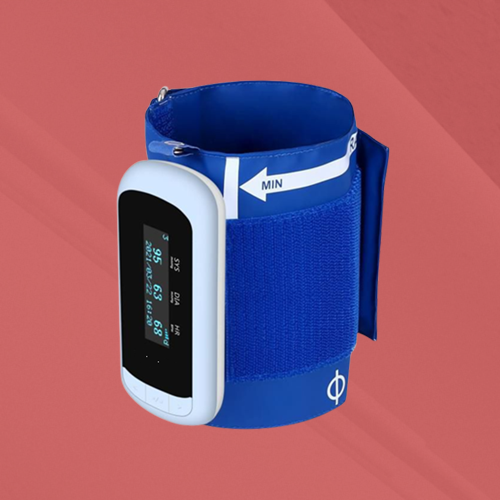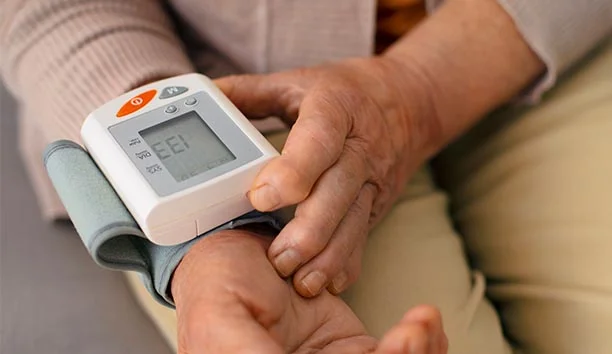The Link Between Accurate Diagnosis and the ABPM test in Bangalore: Why It Matters
The Benefits of the ABPM Test for Accurate Blood Pressure Analysis
Ambulatory Blood Pressure Monitoring (ABPM) uses a sophisticated approach to reviewing high blood pressure. This technique provides continual, 24-hour information, capturing fluctuations that take place during everyday activities and sleep. Such comprehensive monitoring not just boosts accuracy however likewise reveals critical patterns, helping to identify in between true hypertension and problems like white-coat syndrome. Understanding these subtleties might cause more effective treatment approaches. What effects might this have for individual care and monitoring?
What Is Ambulatory Blood Pressure Monitoring (ABPM)?
Ambulatory Blood Pressure Monitoring (ABPM) is a method that permits continuous high blood pressure analysis over a 24-hour period, providing an extensive photo of an individual's blood pressure changes. ABPM test in Bangalore. This method uses a mobile device that immediately determines high blood pressure at normal intervals throughout the night and day. As people set about their day-to-day tasks, the tool catches data reflecting their high blood pressure variations during various times and situations, consisting of rest and physical exertion.ABPM is specifically useful for identifying conditions such as hypertension, as it can compare true high blood pressure and white-coat syndrome, where individuals exhibit elevated analyses in clinical settings yet not in their day-to-day lives. By supplying a thorough sight of blood stress adjustments, ABPM aids doctor in making educated choices regarding medical diagnosis and treatment. Moreover, it boosts the understanding of high blood pressure patterns, making it possible for individualized administration methods for clients
Continuous Monitoring for Improved Accuracy
Continual monitoring of high blood pressure through ABPM significantly enhances the accuracy of analyses compared to conventional techniques. This strategy enables blood pressure measurements at normal intervals throughout the night and day, recording changes that might take place because of daily activities, stress, or various other factors. Unlike single analyses taken throughout a center check out, ABPM gives an extensive profile of a person's high blood pressure over a 24-hour period.This continuous evaluation leads to much more trusted data, enabling health care suppliers to recognize patterns and prospective concerns that might go unnoticed with sporadic measurements. It likewise helps differentiate between true high blood pressure and white-coat disorder, where people display elevated readings as a result of anxiousness in a medical setup. By leveraging the benefits of constant monitoring, ABPM significantly boosts medical diagnosis and treatment techniques, eventually adding to far better patient outcomes and even more individualized health care approaches.
Comprehending Blood Pressure Variability
Blood pressure variability describes the fluctuations in blood pressure readings that can occur with time due to various variables, including exercise, stress and anxiety, and body clocks. This irregularity is considerable as it offers understandings into a person's cardio health and wellness. ABPM test in Bangalore. Variables such as workout can temporarily enhance blood stress, while leisure might lead to a reduction. Additionally, the body's all-natural rhythms can trigger blood pressure to vary throughout the day, generally being lower during the night and higher throughout waking hours. High degrees of variability have actually been associated with increased threats of cardio occasions, making it essential for healthcare professionals to keep track of these changes. Comprehending high blood pressure variability helps in customizing treatment plans and examining total health. Accurate assessment via methods like Ambulatory Blood Stress Monitoring (ABPM) can capture these variations, enabling for an extra comprehensive examination of an individual's high blood pressure profile
Determining White Coat Hypertension
White coat hypertension, typically described as white layer syndrome, is defined by raised blood pressure analyses in scientific settings because of stress and anxiety or tension. Identifying its signs and symptoms and signs is vital for exact medical diagnosis, as misinterpretation can cause unneeded treatments. Understanding this phenomenon is necessary for reliable high blood pressure monitoring and individual care.
Recognizing White Coat Syndrome
Numerous individuals show elevated blood pressure readings in clinical settings, this sensation, understood as white layer high blood pressure, can cover the real state of their cardio health. This condition occurs when individuals experience anxiety or stress during medical brows through, resulting in short-term spikes in blood stress. As an outcome, doctor may misinterpret these readings as a sign of hypertension. White layer syndrome highlights the value of accurate blood stress analysis, as relying only on in-office dimensions can result in unneeded treatments or misunderstandings concerning an individual's health and wellness. Understanding this disorder is necessary for clinicians, as it underscores the need for alternative monitoring methods, such as ambulatory blood stress monitoring (ABPM), to obtain a more precise depiction of a person's high blood pressure degrees.
Signs and Indicators
Many individuals may experience specific signs that recommend the existence of white coat hypertension. These signs and symptoms can include elevated blood stress analyses throughout medical sees, gone along with by feelings of anxiousness or anxiety in a scientific environment. go Clients commonly report a rapid heart beat or sweating when communicating with health care professionals, which may aggravate their high blood pressure degrees. Additionally, some people might see a disparity between their in-office blood pressure readings and those taken in your home, where they feel extra kicked back. Recognizing these signs is crucial, as they can indicate that stress or anxiety relevant to clinical setups is influencing their blood stress. Comprehending these indicators can assist in recognizing white layer high blood pressure and figuring out the necessity for additional evaluation.

Importance of Accurate Diagnosis
Precisely identifying white layer high blood pressure is critical for efficient blood stress administration. This problem occurs when a person exhibits elevated blood pressure analyses in a medical setup because of anxiousness or anxiety, while regular analyses are tape-recorded in a much more kicked back atmosphere. Misdiagnosis can bring about unneeded treatment, subjecting clients to prospective drug adverse effects without any type of genuine health and wellness advantage. Using ambulatory high blood pressure monitoring (ABPM) is very important in identifying true high blood pressure from white coat syndrome. ABPM gives continuous high blood pressure measurements over 24 hr, permitting an extensive analysis that can assist doctor make educated decisions. Eventually, exact recognition of white layer high blood pressure assurances clients get suitable care and prevents the pitfalls of mismanagement.
Examining Nocturnal Blood Pressure Patterns
Examining nocturnal high blood pressure patterns is crucial for comprehending an individual's general cardiovascular health. Nighttime dimensions can reveal substantial fluctuations in high blood pressure, which may indicate high blood pressure variability. Furthermore, these patterns are very closely associated with heart health and wellness, highlighting the value of continuous monitoring beyond basic office brows through.
Importance of Evening Measurements

Nighttime high blood pressure measurements are usually important for comprehending an individual's overall cardiovascular health. These readings provide important insights into just how high blood pressure acts during rest, which can vary significantly from daytime degrees. Checking nocturnal high blood pressure enables the recognition of unusual patterns, such as non-dipping or reverse-dipping sensations, which may show a raised threat for cardiovascular occasions. Furthermore, nighttime evaluations can assist assess the efficiency of antihypertensive therapies, making certain that medicines are suitably managed. By catching high blood pressure modifications throughout the night, medical care professionals can create much more personalized therapy strategies, eventually boosting patient results and decreasing the possibility of long-term complications connected with high blood pressure. This highlights the significance of extensive blood stress evaluation throughout the day and evening.
Spotting High Blood Pressure Irregularity
Just how can the variability of nocturnal high blood pressure patterns inform hypertension administration? The analysis of nocturnal high blood pressure with the Ambulatory Blood Pressure Monitoring (ABPM) test reveals important fluctuations that usually go unnoticed in traditional dimensions. These patterns can show the existence of "non-dipping" high blood pressure, where high blood pressure stops working to drop during sleep, suggesting a raised cardio threat. By identifying such irregularity, doctor can tailor interventions better, changing therapy plans based upon the person's specific nighttime blood pressure habits. Comprehending these patterns additionally help in evaluating the efficiency of antihypertensive medications, ensuring that individuals attain suitable blood stress control throughout the night and day. Subsequently, nighttime evaluation ends up being important in thorough hypertension management.
Relationship With Heart Health And Wellness
Recognizing nocturnal blood pressure patterns not just help in hypertension administration but likewise has significant ramifications for heart health and wellness. Study suggests that uncommon nocturnal high blood pressure readings, such as non-dipping or reverse dipping patterns, are connected with boosted cardio risks. Throughout rest, blood pressure commonly declines, a phenomenon important for cardiovascular healing. When this decrease is absent, it might signify underlying issues such as free disorder or enhanced arterial tightness. Additionally, individuals with elevated nighttime see post high blood pressure go to an enhanced risk for cardiac arrest and stroke. Subsequently, making use of ambulatory blood stress monitoring (ABPM) to evaluate these nighttime Visit Website patterns can offer essential insights, permitting tailored interventions that much better secure heart wellness and enhance overall patient end results.
Tailoring Treatment Strategies Based Upon Real-Life Data
Tailoring therapy plans based upon real-life information includes leveraging continuous blood pressure keeping track of to create tailored medical care approaches. The Ambulatory Blood Pressure Monitoring (ABPM) examination gives a detailed profile of a client's blood pressure variations throughout daily tasks. This comprehensive data allows medical care service providers to identify patterns that could be neglected in traditional office visits.By assessing variations in high blood pressure during different times and problems, clinicians can change medicines, dosages, and lifestyle suggestions to far better suit individual client requirements. This personalized approach not only boosts the performance of therapy strategies but also minimizes the probability of adverse responses to medications.Furthermore, real-life data can disclose possible triggers for hypertension, resulting in aggressive treatments. Generally, customizing therapy based on constant monitoring cultivates an extra efficient, patient-centered strategy to handling high blood pressure and boosting long-lasting wellness end results.
Boosted Client Compliance and Involvement
While traditional monitoring approaches might restrict person involvement, the usage of Ambulatory Blood Stress Monitoring (ABPM) substantially enhances client compliance and involvement in their very own healthcare. By permitting individuals to wear a portable gadget that tapes blood stress over 24 hours, ABPM encourages people to take an energetic function in their health administration. This continuous monitoring supplies a more detailed view of blood stress changes, encouraging individuals to recognize their condition better.Moreover, ABPM fosters an environment where people can review their readings with doctor a lot more meaningfully, resulting in notified decision-making. People become much more bought adhering to prescribed therapies and way of life modifications when they see real-time data mirroring their health condition. Subsequently, the change from passive individual to active collaborator not only enhances conformity yet likewise improves overall health results, making ABPM an important tool in cultivating individual involvement in hypertension management.
Often Asked Concerns
The length of time Does an ABPM Examination Normally Last?
The ABPM examination normally lasts 24-hour. During this duration, it gauges high blood pressure at routine intervals, supplying a complete assessment of an individual's high blood pressure patterns throughout their daily activities and rest.
Are There Any Threats Associated With ABPM Screening?

Can ABPM Be Made Use Of for Kids and Teens?
ABPM can be made use of for children and teens, providing important insights right into their high blood pressure patterns. Nonetheless, appropriate tools sizing and interpretation by experienced experts are important to guarantee precise analyses and avoid misdiagnosis.
Exactly How Is ABPM Different From Traditional Blood Pressure Monitoring?
ABPM differs from typical monitoring by giving continuous high blood pressure analyses over 24 hours, catching variants throughout daily tasks and rest, whereas traditional approaches often rely upon single dimensions, possibly missing out on critical variations in blood pressure.
What Should Individuals Do During the ABPM Examination?
During the ABPM examination, people should preserve regular tasks while preventing heavy workout, extreme high levels of caffeine, and smoking cigarettes. They must likewise maintain their arm still when the tool inflates, making sure precise analyses throughout the monitoring duration.